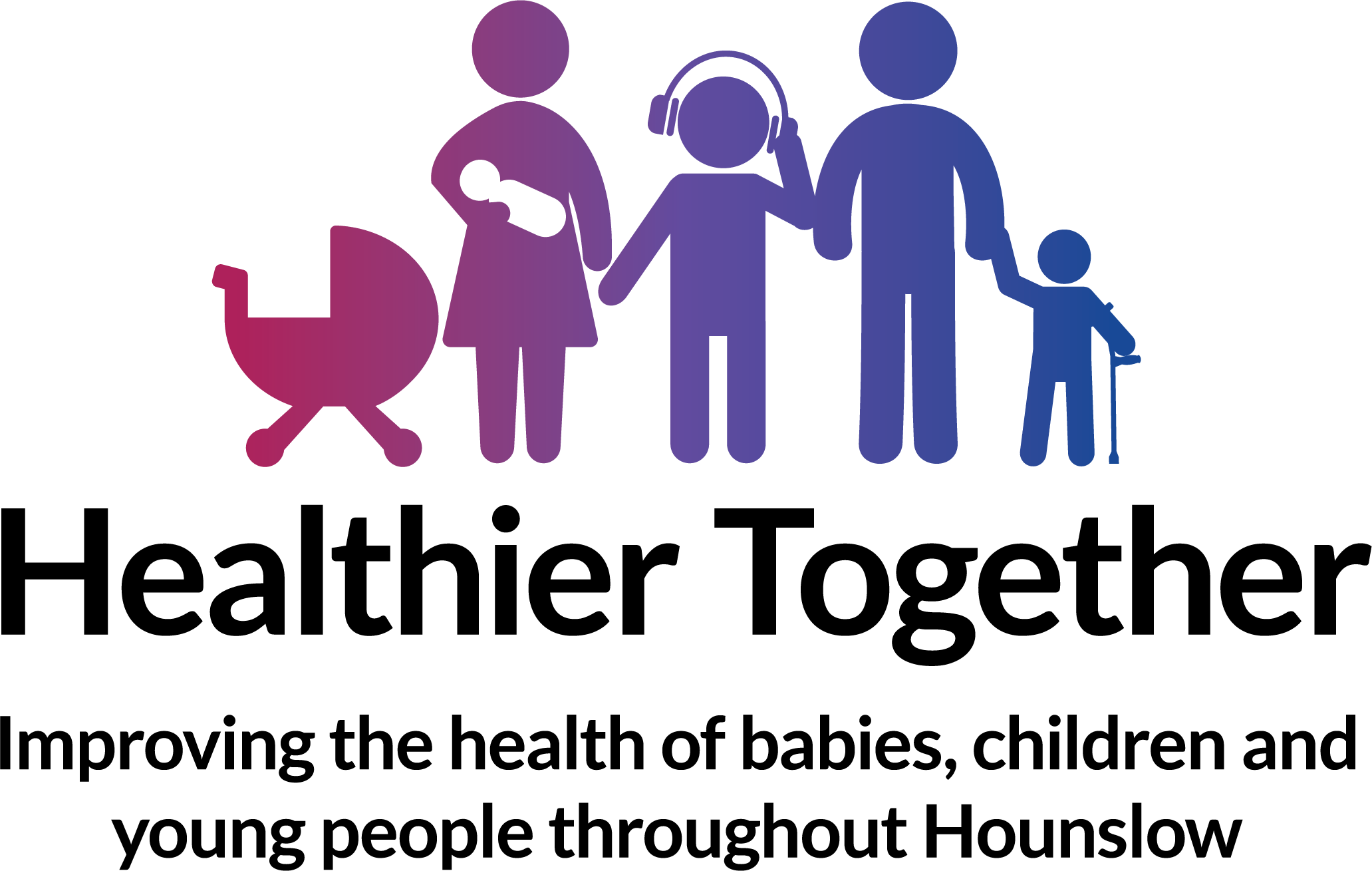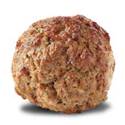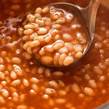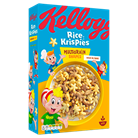Healthy Eating and Weight
It can be hard getting children to eat more healthily and be more active. It is very important that children have a healthy diet and here are some of the ways in which you can encourage this within your family.
Healthy diet
Healthy eating isn’t just about the food children eat, it is also about behaviour around eating. Children, especially toddlers, need clear boundaries. Don't let all those good eating habits disappear as your baby gets older. Try not to reward with food and do not let others either. If grandparents want to offer treats suggest sticker books, reading books, or a day out instead.
These are some tips for enjoying food:
Mealtimes
Make mealtimes a family and social event. Sit together and turn off screens and TV. This encourages slower eating which in turn reduces the amount we eat. We all tend to eat more when distracted by a screen.
It is important to have regular mealtimes so that your child becomes used to eating at certain times of the day. There are many options for healthy snacks in between main meals including vegetable sticks and fruit.
It is important to encourage your child to feed themselves (finger foods or spoon foods). Children are good at knowing when they are full but we tend to keep encouraging them to eat more.
At mealtimes allow older children to serve themselves.
Avoid drinks which are full of sugar. This includes pure fruit juice and fizzy drinks. These are also not good for teeth. Tooth decay is totally preventable. Water is the best drink for children.
Snacks
Don't let older children get into the habit of helping themselves to food from the cupboards or fridge between meals. This is often a sign of boredom and the calories soon add up. Make sure they always ask and if you think they have had enough to eat or there is a meal coming up, do not allow it.
Set boundaries about eating. Children often demand food or insist they are hungry when you know they have had enough to eat. They are often bored or thirsty. Remember that being hungry is normal before meals. Otherwise we would have no appetite. Children need to learn to wait.
Use the free NHS Food Scanner App. Just scan the barcodes of your family's favourite foods. Swipe to see the healthier options available and make a swap next time you shop!
Fruit and vegetables
To increase your child’s interest and appetite for vegetables, it is a great idea to involve them in the recipe and shopping stages. By doing this together your child will become aware of everything that is available and can show a preference in terms of a recipe or ingredients. Your child will enjoy having a say in what your family eats and you can make a challenge out of trying new types of food.
Take time to explore the supermarkets and talk to your child about all the different types of fruit. Make it a challenge to try as many fruits as possible. Listen to what your child says about each one. When they tell you what they like, you could start a game in which you could include fruit in different forms including cereal, fruit bowls, or a make-your-own ice lolly.
Food shopping
We understand that it is not possible for many parents and carers, but try and use any opportunity to involve your children in the food shop. This will give them an idea of where their meals are coming from. It can also spark an interest in a particular food item that they like the look of. The supermarket will open their eyes to many new products. It will encourage them to try more whilst also helping in the decision-making. Sometimes fresh fruit and vegetables can be expensive. You could try frozen fruit and vegetables which have the same healthy effect and often cost less.
If you’re more than 10 weeks pregnant or have a child under 4, you may be entitled to get help to buy healthy food and milk.
Recipes and cooking
- Start 4 Life can provide you with lots of interesting, inexpensive, and simple recipes for your baby or toddler
- Change 4 Life provides the same quality recipes but for children one year and older
- The Henry website also has recipes.
It's worth cooking in bulk too because this means you will have home made ready meals available for super quick healthy dinners. There are many stages to cooking a meal and you can get the whole family involved.
What can I do if my child won't eat/is a fussy eater?
- Mealtimes are a time for learning about food and eating and should be an enjoyable experience. Eating together as a family encourages the child to copy eating and drinking behaviour. It is also a social time for families so eating together should be encouraged.
- Make sure your child is sitting in an appropriate chair and is sitting with the rest of the family.
- A calm, relaxed environment for eating and drinking may be helpful for some children, especially if they are easily distracted, however some children may benefit from background noise. Try both approaches to find out what works best for your child.
- Use brightly coloured bowls and plates. These may make the meal look more appealing.
- Try not to show your concern or make negative comments in front of your child.
- Never leave your child unsupervised whilst he or she is eating or drinking.
- Offer regular meals and snacks at set times, as this is better than letting your child ‘pick’ through the whole day.
- Avoid fluids just before and during meals, as this will reduce your child’s appetite. Often children are not hungry because they have had too much juice or milk during the day and night. Try to avoid giving more than 1ó pints of fluid during the day. Children over the age of one year should only be offered milk or water; and not be given drinks during the night.
- Give your child lots of positive praise when he or she does eat and ignore any food refusal; calmly offer the food three times before telling your child the meal is over, then remove the meal without any further comment.
- Limit mealtimes to 20 minutes. Try not to rush a meal, as your child may be slow to eat, but try not to let the meal drag on for too long. Your Dietitian will advise you on how to increase the energy density of your child’s meal so the mealtime can be reduced, if necessary.
- Offer new foods in a predictable pattern, e.g. once a week for 8 weeks. Intersperse new meals with old ones. E.g. 3 new teatime/lunches and 4 tolerated teatime/lunches a week.
- Do not worry if they make a mess, this is an important part of your child’s development. If your child stops eating at a meal, try once to encourage him or her to take a little more. If this is successful show that you are pleased and give positive verbal reinforcement.
- Never use food as a reward.
- NEVER force feed your child.
- Only check your child’s weight once every 8 weeks. Most fussy eaters maintain good growth despite their apparent lack of intake.
Trouble shooting
Trying new foods with your child-Turning "No" into "Yes"!
If your child is an avoidant, picky, or fussy eater, it is likely that they have an automatic ‘No’ response to foods. This is the safest strategy to avoid eating something that they might find distasteful or disgusting. The issue is that this can become so automatic that they don’t even give foods a try, and may not even touch them.
In addition, we often ask children to eat a whole portion of something; this can be off putting and means that the food is in their mouth for a long time. When trying something new, it’s often better for you and your child to aim for a touch,
a lick, or a tiny bite. Try to think of acceptance as a chain…even sniffing or touching a new food is part of the chain of acceptance.
Food Chaining: start by offering foods that are similar to the foods they like. By making subtle changes, your child is more likely to achieve a successful taste. Try to be patient and realistic with food chaining; if your child is very sensitive to changes then aim for very small differences between foods, and remember that
the goal at this point is a lick, bite or a taste rather than the child needing to eat
the whole portion.
Help to bridge nutritional gaps when your child doesn't eat whole food groups:
HELP! My Child won’t eat DAIRY
If we look at the Eat Well guide. Dairy foods sit within the blue section. There are many foods in the dairy (blue) section of the eat well plate. This means that there is no need to be concerned if your child avoids one single food. For example, if you child avoids milk, but eats cheese.
 Tips:
Tips:
- It is ok for children to take cow’s milk alternatives such as oat milk/yoghurt or soya milk/yoghurt. Just make sure they have been fortified with calcium. You can check this by reading the nutrition information on the back of the packet.
- Mix yoghurt or cheese into sauces if your child won’t take them alone.
- Consider desserts which are rich in calcium such as rice pudding or custard.
If your child will not have any foods from the blue section of the eat well guide, there are still ways we can ensure they are getting what they need! The key nutrient we find in dairy products is calcium. Calcium is important for developing strong bones in growing children.
How much calcium does an average child need?
GOSH Nutritional Requirements 2022

Dairy is our best source of calcium, however with careful planning, we can get enough calcium in our diet using alternative foods. Please see the table below.
|
Food |
Calcium |
|
|
|
Cup of milk for comparison |
235mg |
|
|
Baked Beans ¼ cup |
40mg |
|
|
White pitta bread |
52mg |
|
|
1 x Sausage (pork or vegetarian) |
20mg |
|
|
1 teaspoons seasame seeds |
30mg |
|
|
Ready brek 30g serving |
400mg |
|
|
Fortified breakfast cereals (30g serving) |
105mg |
|
|
Fortified cereal bar x 1 |
140-200mg |
|
|
White bread 1 slice |
50mg |
|
|
Fortified breads 1 slice
|
145mg |
Supplements:
If you are still worried about your childs calcium intake, you can consider over the counter supplements. Please ask your pharmacist for help with choosing the right one for your child.

If you are still concerned that your child isn’t getting enough calcium, then please contact your GP to arrange a referral to the dietitian.



You can also get the vitamins and minerals found in fruit and vegetables from other food sources.
Examples of products that contain each important vitamin or mineral are listed below:




Supplements:
Over the counter supplements are a great way of making sure your child is getting the vitamins and minerals they need. Please ask your pharmacist for help with choosing the right one for your child.
For example:
- Nutrigen Vitamixin Sprinkles contain a large range of vitamins and minerals including 12.5mg iron in each 1g sachet. Sachets need to be mixed with ‘semi-solid’ foods to ensure they are tasteless such as yoghurts, ketchup and sauces.
- Vitabiotics wellbaby or wellkid multivitamins (make sure you get the right one for your childs age)
- Haliborange Gummies – multitvtiamins.
- Supermarket own brand gummies.
If you are still concerned that your child isn’t getting enough vitamins and minerals, then please contact your GP to arrange a referral to the dietitian.

Alternative foods:
|
Food |
Iron |
Protein |
Comments |
|
1 beef meatball (for comparison!) |
1.4mg |
3.5g |
|
|
Pasta ½ Cup |
1mg |
4g |
|
|
White Bread 1 Slice |
- |
3.5g |
|
|
Baked Beans ¼ cup |
1.3mg |
3.5g |
|
|
Ready brek 30g serving |
4mg |
8.6g |
|
|
Fortified breakfast cereals 30g |
2.4mg |
2.1g |
|
|
Egg x 1 medium |
0.3mg |
6.4g |
|
|
Peanut butter 1 tablespoon (15g) |
0.3mg |
3.7g |
|


If you are still concerned that your child isn’t getting enough iron and protein, then please contact your GP to arrange a referral to the dietitian.
My child doesn’t want to touch food:
Some children are much more sensitive to sensory experiences. For them the world is a brighter, louder place. We have found that children who are sensitive to touch (tactile sensitive) also don’t like as many foods, as the textures are more intense in their mouths.The main way to help them with this is to find the textures they don’t mind touching and find similar (but slightly different) textures. Try to choose new foods that are very similar to ones they like.
Start with Non-food play: These are messy games with a variety of substances, which expose children to textures. Children who do not mind getting messy also tend to eat a greater variety of foods.

Sensory chaining: If your child is reluctant to touch very different substances, have a go at sensory chaining. You will need to start by identifying a substance they like touching, and then try to make changes to it. Start your games with these, but then try to chain these substances to less-familiar ones. Think of a slightly different substance that is unfamiliar but similar, or try mixing less-familiar substances in the familiar one.
Start food games with sensory features they like, and gradually introduce one they are not as keen on. Can you see any emerging patterns about what your child will and won’t eat? It may be best to start with new foods with sensory features that your child prefers.
My child has no interest in foods
All children have different appetites. If you show pleasure in the food you are eating and talk about it in a positive and relaxed way, focusing upon taste, then your child will gradually show more interest in food.
Give your child very small portions of food, and small tastes, as large portions can be off-putting.
My child will play with food but will not eat it.
It is important to let your child explore their food. However we are not saying that food should be thrown around the room!
Let your child explore their food, but then take it away after a period of time if they are not interested in eating it.
My child eats the same foods every day
Ensure that there are some foods your child likes at mealtimes. You could have a few foods in some bowls on the table, so they have control over which they put on their plate, and how much they want. This gives them a sense of control
which is rewarding. This approach also offers the opportunity for exposure to foods without the added pressure of being expected to eat it.
Food play examples:

Further tips:
- Try to eat together as a family and eat the same meal, ensuring that your child has an appropriately sized portion and that their food does not have any added salt.
-
Meal times should be relaxed social time together. They should not be only about food-talk and focus on other things while eating, keep things light and fun! Otherwise mealtimes and eating will be associated with stress and they won't eat.
- Keep trying with new foods and offer them in different ways (e.g. offering carrot cooked, uncooked, grated, mixed in a sauce etc.).
- Get your child involved in preparing and cooking meals.
- Praise your child when they try something new.
- Aim for no more than two snacks a day.
-
Don’t keep offering milk when they don’t eat- this will fill them up as their stomach is small.
- Don't cook to order, if food is uneaten at the end of the meal, just take it away without comment.
-
At around 2 years of age it is very normal for children to only want certain foods, they eat it well then suddenly go off that food and want a different one. It is important to offer a healthy balanced diet but be aware this is part of normal development. Don’t keep throwing away food and then cooking just what they want.
-
It takes a lot of tastes before babies and children get used to the taste. So keep offering. But never force feed.
- Focus on minimising distractions (phones, toys, pets) during mealtimes so your child can really concentrate on the food.
This information is adapted from The Sensory Plat Toolkit available at: SENSORY PLAY TOOLKIT - Home
What if I need more help?
If you need further help and support, speak your health visitor and/or GP.
Further information:
This video Parent Workshop - When Children Won't Eat - Free 2 hour webinar . Recommended by Hounslow Paediatric dieticians for top tips for improving mealtimes for fussy eaters to help them grow out of it with time.
https://www.nhs.uk/conditions/baby/weaning-and-feeding/fussy-eaters/
Fussy eaters | Great Ormond Street Hospital (gosh.nhs.uk)
Tips and tools | Child Feeding Guide
Tackling fussy eating - Health Under 5s
Toddler not eating? Ideas and tips | Raising Children Network
Toddlers at the Table: Avoiding Power Struggles (for Parents) | Nemours KidsHealth
Video playing with food Custard - vimeo clip on Vimeo
Healthy Eating information for One to Four Year olds:
https://www.firststepsnutrition.org/eating-well-early-years
Help children build a strong relationship with food and make the right choices from the start
- Nutrition guidance - Department for Education
- Healthier families - NHS
- Five tips for helping your kids to eat healthily all year round - BBC
- Eating Well - First Steps Nutrition Trust
- Factsheet for healthy children's diets - Association of UK Dieticians
- For further information visit the NHS webpage on fussy eaters.
Ask for a GP appointment if:
- Your child’s weight or growth is a concern
- Your child’s diet is restricted to 10 foods or less
- You suspect your child is iron deficient
- Your child is chronically constipated
- You suspect a food allergy.
Healthy lunch boxes
It is important to make sure the lunch box your child takes to nursery or school provides a healthy and balanced lunch. This means plenty of good quality foods from the five food groups. Avoid giving too many processed or ready made foods as these usually contain fewer good nutrients and often have more salt and sugar.
A balanced packed lunch should contain:
- starchy foods: these are cereals, bread, rice, potatoes, and pasta. Starchy foods are a good source of energy and should make up a third of the lunchbox
- protein foods: including meat, fish, eggs, beans, and tofu/Quorn
- a dairy item: this could be cheese, yogurt, or milk as a drink
- vegetables: raw or cooked
- a portion of fruit
- water or milk to drink.
Children often like food they can eat with their fingers. Chop up raw vegetables such as carrots or peppers and give them hummus or cottage cheese to dip them in. Breadsticks and wholemeal crackers are great finger foods that can be paired with cheese pieces.
Replace chocolate bars and cakes with fresh fruit. Vary the fruit each day and get them to try new things. You could also make up a tasty fruit salad. Be inventive and encourage your children when they try something new.
Some good ideas can be found here.
Note that dried fruit is no longer recommended as a between meal snack as it's high in sugar and can be bad for teeth.
Your child will be able to get free school meals if they are in reception class, year one or year two. Families who are on benefits or a low income may be eligible for free school meals and healthy start vouchers for their children, so please visit your local council website.
The Henry website gives some good suggestions for packed lunches.
Healthier Food Swaps.
These simple food swap ideas can help cut down on sugar, salt and fat in your and your family's diet, plus discover easy ways to make a swap when you next shop.
Even just 1 or 2 everyday swaps can really make a difference and go a long way to making each day healthier – but the more you make, the better!
Click here to find out more about what's really in the food your family eats.
6 ways to help your child with their weight
Small lifestyle changes can make a big difference – try these top tip from Better Health: Healthier Families.
![]()
1. Find some support
Speak to a health visitor, school nurse, GP or practice nurse who will help support your family with diet and lifestyle changes if needed.
![]()
2. Make some healthier food swaps
There are lots of easy ways to cut back on sugar, salt and saturated fat – get started with our top tips and simple swaps.
![]()
3. Eat balanced meals
Find out what a healthy, balanced diet looks like.
![]()
4. Try some new recipes
Get inspiration to help your family eat well every day.
![]()
5. Get moving
Try boosting your family's activity levels in 10-minute bursts with our Disney inspired playalong games.
Play a 10 Minute Shake Up game
![]()
6. Less screen time, better sleep
Sitting around too much makes it more more likely your child will put on weight, and can affect how well they sleep. Sleeping well helps kids develop, stay healthy and perform better at school.
The Sleep Charity: relaxation tips
Vitamin drops for babies and children
It is recommended that all children aged six months to five years are given vitamin A, C and D supplements each day (vitamin drops). That’s because growing children, especially those who are a bit fussy with what they eat, often don’t get enough vitamins in their diet. Vitamin A is important for their immune system and keeps their skin healthy. Vitamin C helps them absorb iron (to stop them getting anaemic). Vitamin D keeps their bones strong.
It is also recommended that breastfed babies are given vitamin D supplements from birth. Infant formula is fortified with vitamin D so extra vitamin D is not required.
Your baby or child is entitled to free vitamin drops if you qualify for Healthy Start.
Your health visitor can give you advice about vitamins for your baby. For more information visit the NHS webpage on vitamins.
What if I need more help?
If you need further help and support, speak to your health visitor or GP.
Food banks provide free emergency supplies of food. To visit a food bank you may need to contact Citizen's Advice, your local children's centre, or your Health visitor for a foodbank voucher. Find your local food bank here.
Healthy Hounslow - Beezee Families
Beezee Families is a free, award-winning, healthy lifestyle programme that is designed to include the whole family. The programme can be completed in person or online. For more information click here
How does it work?
- Learn about nutritious snacks and easy meals to cook together.
- Get expert support from our coaches and nutritionists.
- Move around every week with games and activities.
- Have fun learning about healthy living!























